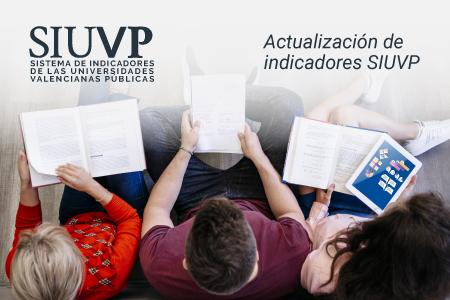News

Valencian public universities' income level is still below that of 2008, despite an increase in their own resources that account for 21.3% of the total
The income that the Valencian universities have to support their work is below the pre-crisis levels of 2008. In 2018, the five public universities of the Valencian Community —University of Valencia, University of Alicante, Polytechnic University of Valencia, Jaume I University and Miguel Hernández University— had a joint total income of 1,195.9 million euros, 6.1% less in nominal terms than in 2008, when the budget reached 1,274.2 million, according to the recently updated SIUVP (Valencian Public University System of Information) website.
The data provided by the universities, through which they account in a transparent manner to society the results of their performance, has been broken down by source of income. Specifically, the income received from State public administrations is the largest contribution and represents 72.3% (864.6 million euros) of their total income. However, this figure is 10.8% inferior when compared to 2008, year in which national public resources made up 76.1% (969.5 million) of the total income.
However, the own resources obtained by the universities’ activities (net recognized rights from fees and income from assets, sales of real investments and private firms) have increased in ten years from 16.9% of the total in 2008 to 21.3% in 2018.
The SIUVP website, created by the five Valencian public universities and the Valencian Institute of Economic Research (Ivie), has just updated 30 of its more than 60 indicators. For example, the time period for indicators related to human resources, research and patents has been extended. In addition, the economic data for each university has been updated, for which SIUVP is the most up-to-date source at the moment. More in detail, the importance of the resources obtained by R+D projects has also been analyzed, with a weight of 14.7% over the total in 2018. The indicators related to research show the growing number of scientific publications with international collaboration, as well as the upward trend in the number of publications per doctor professor.
The data contained in the SIUVP website ranges from academic issues related to supply and demand degrees, to more specific economic data on resources and results of each university’s activity. Specifically, the indicators are grouped into the following areas:
- Admission
- Students
- Academic results
- Internationalization
- Human Resources
- Research and tech transfer
- Economic data
For more information, please visit www.siuvp.es

